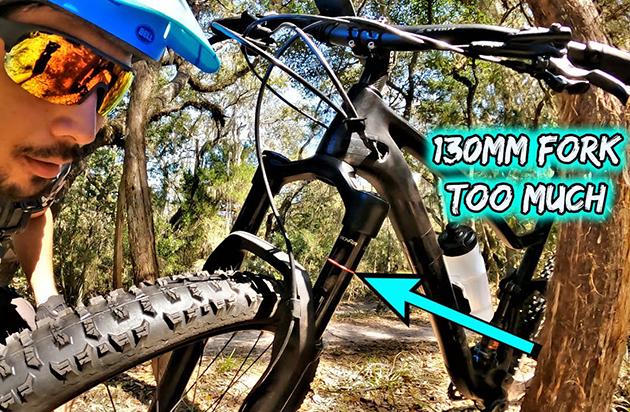If you're new to mountain biking or just exploring the different types of bikes available, you may have come across the term “suspension bike.” But what exactly does that mean, and how does it affect your riding experience? Whether you're hitting rugged trails, tackling rocky descents, or simply exploring the outdoors, suspension bikes are designed to provide better comfort, control, and performance on rough terrain. In this post, we’ll break down what suspension bikes are, how they work, and why they might be the right choice for you.
What Is a Suspension Bike?
A suspension bike is a type of bicycle that is equipped with a suspension system to absorb shock and reduce the impact of rough terrain. Unlike traditional rigid bikes, which have a solid frame and fork, suspension bikes feature shock-absorbing components in the front (the fork) and/or the rear (the frame or rear shock). This suspension system helps smooth out bumps, rocks, and other obstacles on the trail, giving riders a more comfortable and controlled experience.
There are two main types of suspension bikes: front suspension (also known as hardtail) and full suspension. Let’s explore each type in more detail.
Front Suspension (Hardtail)
A front suspension bike, or hardtail, has a shock-absorbing fork at the front of the bike but does not have suspension in the rear. The fork is designed to absorb shocks from obstacles like rocks, roots, and bumps, helping to keep your hands and arms from getting jarred. Hardtail bikes are generally lighter, more efficient, and require less maintenance than full-suspension bikes, making them an excellent choice for cross-country riders or those who primarily ride on less technical terrain.
Advantages of Front Suspension Bikes:
- Lighter weight
- More efficient pedaling (especially on smooth trails)
- Lower maintenance costs
- Ideal for cross-country and less technical riding
Disadvantages:
- Less control and comfort on very rough or technical terrain compared to full-suspension bikes
Full Suspension
Full suspension bikes, as the name suggests, have both front and rear suspension systems. The front fork absorbs impacts from the terrain, while the rear shock (or shock absorber) does the same for the rear of the bike. This system is ideal for riders tackling more technical trails, downhill tracks, or rugged mountain routes, as it significantly enhances comfort and control. The rear suspension helps maintain traction, preventing the rear wheel from bouncing off the ground and giving you better control over the bike’s handling.
The rear shock in full suspension bikes can be adjusted for different types of terrain, allowing riders to fine-tune the bike’s performance based on their specific needs.
Advantages of Full Suspension Bikes:
- Better comfort and control on rough terrain
- Increased traction and stability, especially on downhill or technical trails
- More forgiving ride for beginners or those new to mountain biking
Disadvantages:
- Heavier than hardtail bikes
- Requires more maintenance due to additional components
- More expensive compared to front suspension bikes
How Does a Suspension Bike Work?
Suspension systems use a combination of springs and dampers to absorb and control shock. When the bike encounters a bump, rock, or other obstacles, the suspension compresses to absorb the impact, and then it returns to its original position, thanks to the spring and damper combination. The damper controls the speed of the spring’s return, ensuring a smooth and controlled recovery. This reduces the jarring feeling you would otherwise experience on a rigid bike, improving overall comfort and stability.
Key Components of a Suspension System:
1. Fork (Front Suspension): The fork absorbs the shock at the front of the bike and helps keep your hands and arms steady when riding over rough terrain.
2. Rear Shock (Full Suspension): The rear shock absorbs impacts in the rear of the bike, providing additional comfort and traction.
3. Shock Absorbers (Springs and Dampers): These are the core components that control the compression and rebound of the suspension, ensuring that the ride is smooth and stable.
Why Choose a Suspension Bike?
If you're planning on riding in rough or rocky terrain, or if you want to tackle more technical trails, a suspension bike will make a significant difference in your experience. Suspension bikes are designed to enhance control and comfort, especially on uneven or bumpy surfaces. Here are a few reasons why you might opt for a suspension bike:
- Improved Comfort: Suspension systems help reduce the impact of bumps and vibrations, leading to a more comfortable ride. This is especially important for long rides or trails with lots of obstacles.
- Better Control: With both front and rear suspension, you get more traction and stability, helping you maintain control when going over rough terrain, steep descents, or obstacles.
- Increased Confidence: A suspension bike makes it easier to navigate technical trails without worrying about losing control or hurting yourself from the impact of bumps and drops.
- Versatility: Suspension bikes, particularly full-suspension models, are great for a wide range of terrains, from cross-country routes to downhill trails.
The Trifox MFM100 Full Suspension Carbon MTB Frame
For those looking to invest in a high-performance mountain bike, the [Trifox MFM100 Full Suspension Carbon MTB Frame] is an excellent option. Featuring a lightweight, durable carbon fiber frame and advanced suspension technology, this bike offers enhanced shock absorption, traction, and overall control, making it perfect for mountain biking enthusiasts looking to take on challenging terrains. With its stiff and responsive frame design, the Trifox MFM100 is an ideal choice for riders who want the perfect balance of comfort, performance, and durability.

Final Thoughts
Whether you opt for a front suspension (hardtail) or full suspension bike, suspension systems are a key feature for riders who want to improve comfort and performance on rough terrain. By absorbing shocks and maintaining traction, suspension bikes make riding on challenging trails smoother and more enjoyable. With options ranging from lightweight hardtails to full-suspension models like the Trifox MFM100, there’s a bike to suit every type of rider and riding style.




















































































